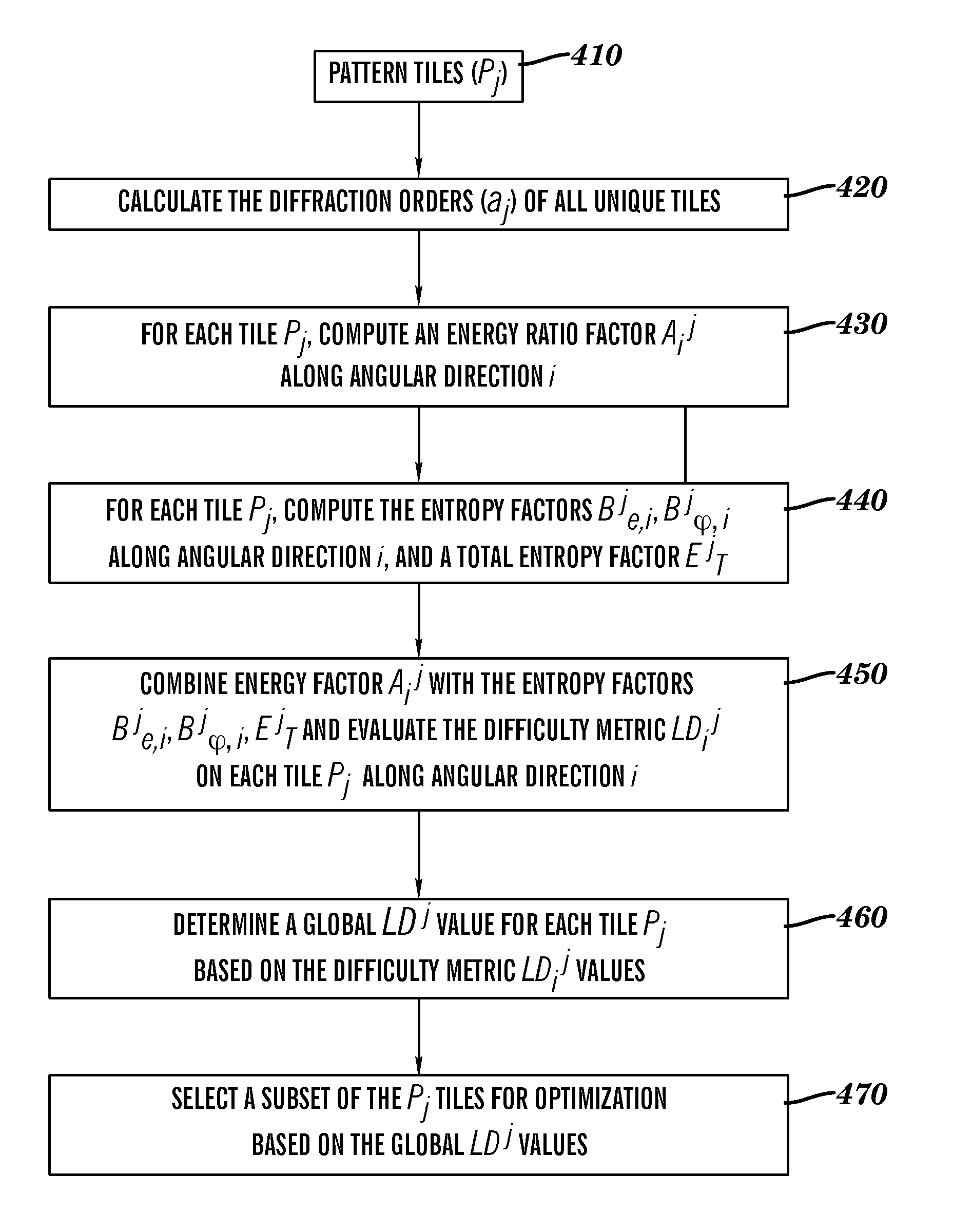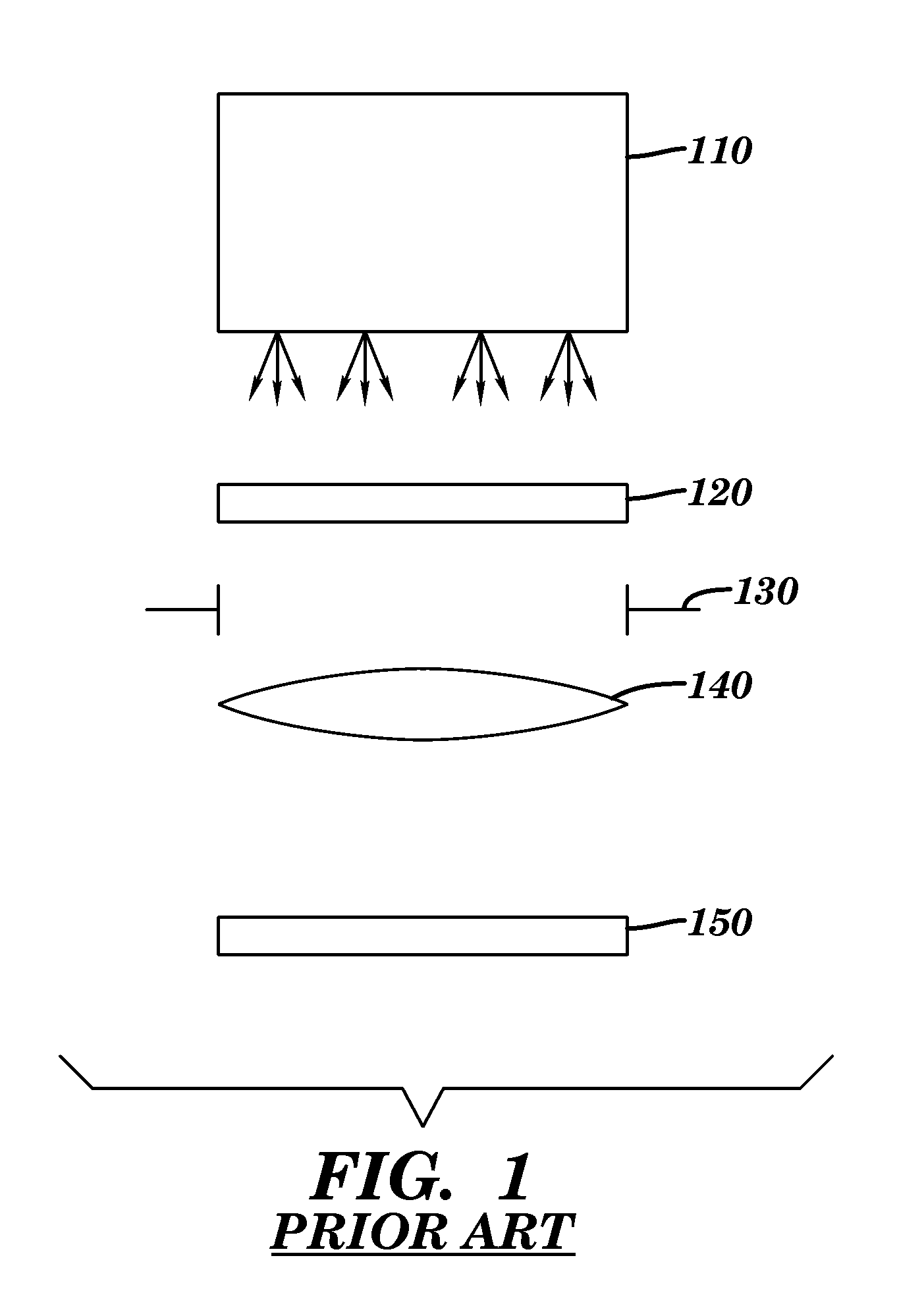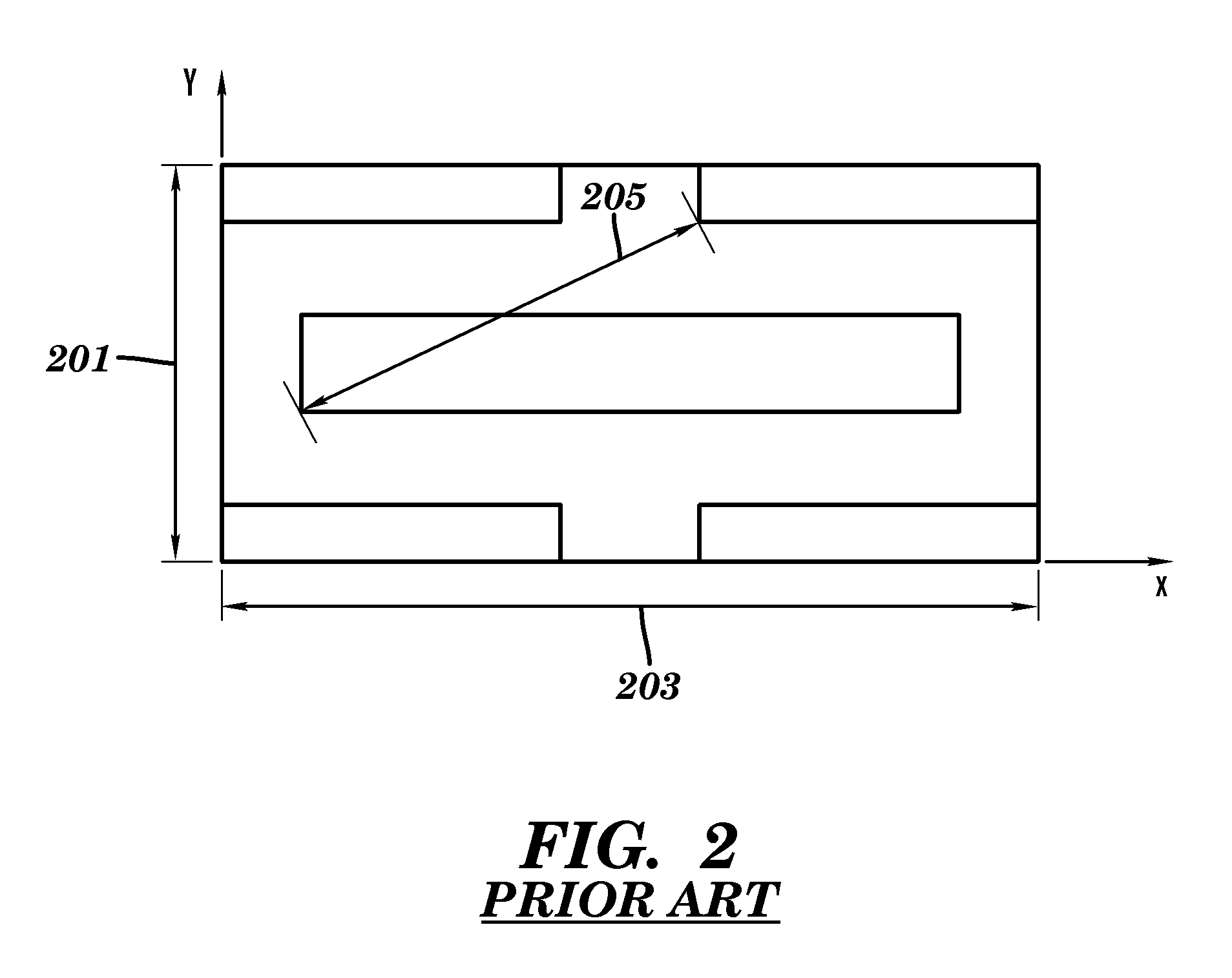Method for fast estimation of lithographic binding patterns in an integrated circuit layout
a technology of integrated circuit and lithographic binding pattern, which is applied in the field of lithographic printing, can solve the problems of limited resolution of lithography tools, increased difficulty, and significant image distortion
- Summary
- Abstract
- Description
- Claims
- Application Information
AI Technical Summary
Benefits of technology
Problems solved by technology
Method used
Image
Examples
Embodiment Construction
[0035]This invention presents a method and apparatus for designing and optimizing layouts for use in the manufacture of integrated circuits, and more particularly, for identifying and prioritizing portions of such layouts for which a full optimization methodology is to be performed.
[0036]The basic components of a projection lithographic system are illustrated in FIG. 1. An illumination source 110 provides radiation that illuminates a mask 120, also known as a reticle; the terms mask and reticle may be used interchangeably. The reticle 120 includes features that act to diffract the illuminating radiation through a lens 140 which projects an image onto an image plane, for example, a semiconductor wafer 150. The aggregate amount of radiation transmitted from the reticle 120 to the lens 140 may be controlled by a pupil 130. The illumination source 110 may be capable of controlling various source parameters such as direction and intensity. The wafer 150 typically includes a photoactive m...
PUM
 Login to View More
Login to View More Abstract
Description
Claims
Application Information
 Login to View More
Login to View More - R&D
- Intellectual Property
- Life Sciences
- Materials
- Tech Scout
- Unparalleled Data Quality
- Higher Quality Content
- 60% Fewer Hallucinations
Browse by: Latest US Patents, China's latest patents, Technical Efficacy Thesaurus, Application Domain, Technology Topic, Popular Technical Reports.
© 2025 PatSnap. All rights reserved.Legal|Privacy policy|Modern Slavery Act Transparency Statement|Sitemap|About US| Contact US: help@patsnap.com



